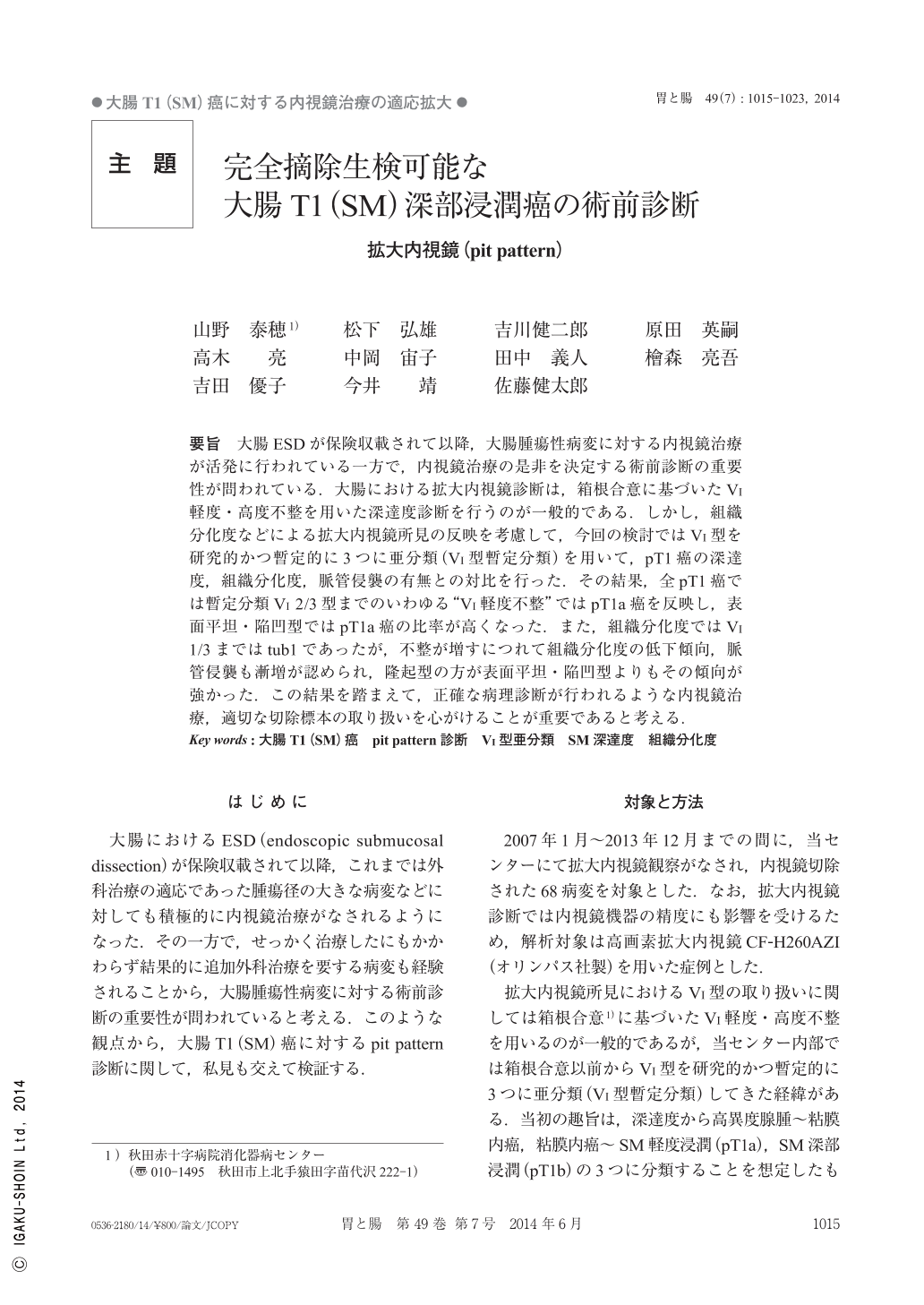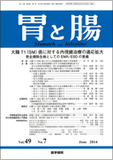Japanese
English
- 有料閲覧
- Abstract 文献概要
- 1ページ目 Look Inside
- 参考文献 Reference
- サイト内被引用 Cited by
要旨 大腸ESDが保険収載されて以降,大腸腫瘍性病変に対する内視鏡治療が活発に行われている一方で,内視鏡治療の是非を決定する術前診断の重要性が問われている.大腸における拡大内視鏡診断は,箱根合意に基づいたVI軽度・高度不整を用いた深達度診断を行うのが一般的である.しかし,組織分化度などによる拡大内視鏡所見の反映を考慮して,今回の検討ではVI型を研究的かつ暫定的に3つに亜分類(VI型暫定分類)を用いて,pT1癌の深達度,組織分化度,脈管侵襲の有無との対比を行った.その結果,全pT1癌では暫定分類VI 2/3型までのいわゆる“VI軽度不整”ではpT1a癌を反映し,表面平坦・陥凹型ではpT1a癌の比率が高くなった.また,組織分化度ではVI 1/3まではtub1であったが,不整が増すにつれて組織分化度の低下傾向,脈管侵襲も漸増が認められ,隆起型の方が表面平坦・陥凹型よりもその傾向が強かった.この結果を踏まえて,正確な病理診断が行われるような内視鏡治療,適切な切除標本の取り扱いを心がけることが重要であると考える.
Since ESD(endoscopic submucosal dissection)for colorectal tumors has become eligible for health insurance coverage, endoscopic treatment for neoplastic lesions of the colon is being readily performed. On the other hand, a question has been raised regarding the importance of preoperative diagnosis in determining the advantages and disadvantages of treatment. Colorectal magnifying endoscopic diagnosis generally involves performing diagnosing invasion depth on the basis of VI slightly and highly irregular lesions in accordance with classification of Hakone Consensus. However, in the present study we didn't use Hakone's classification, because of we wanted to investigate extent of histodifferentiation and vascular invasion with out invasion depth. We established the original and temporary type VI sub-classification which was divided provisionally into 3 subtypes from the difference between stainability, irregularity and density of orifice of glands, and compared pT1 invasion depth, extent of histodifferentiation, and the vascular invasion. As a result, in all pT1 cancers, lesions that indicated VI 1/3 and VI 2/3 type of the temporary classification corresponded to pT1a cancer And in the same subtypes of lesions, the rate of pT1a cancer was higher in flat and depressed lesions than protruded lesions. Moreover, with regard to the extent of histodifferentiation, lesions up to VI 1/3 were well differentiated adenocarcinoma(tub1), and as irregularity increased, we found that the extent of histodifferentiation decreased, whereas vascular invasion gradually increased. This was observed more in case of protruded lesions than superficial flat and depressed lesions. Based on these results, we believe that it is important to practice endoscopic treatment for accurate pathological diagnosis and to handle resected specimens appropriately.

Copyright © 2014, Igaku-Shoin Ltd. All rights reserved.


